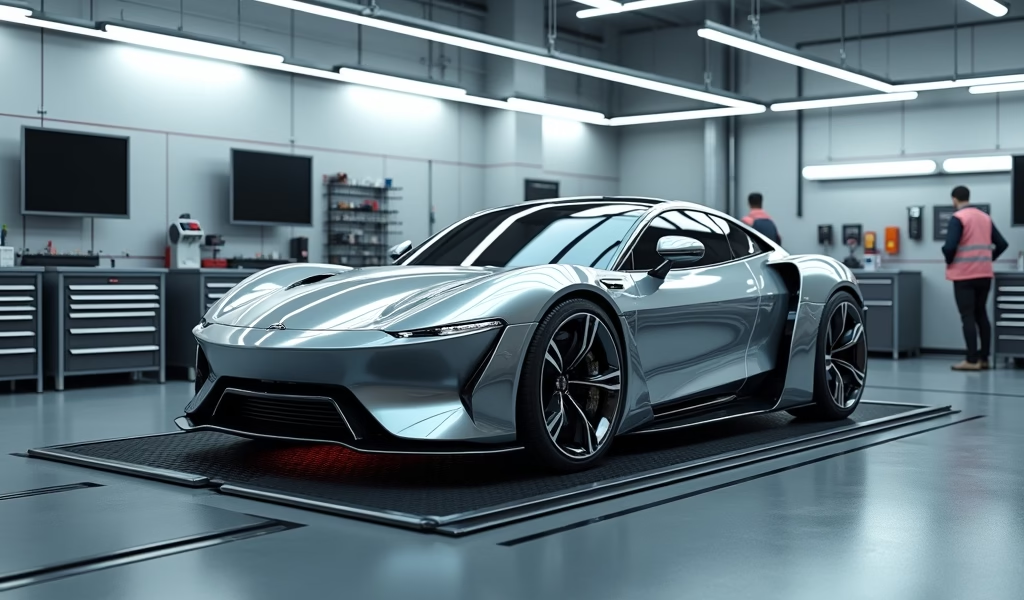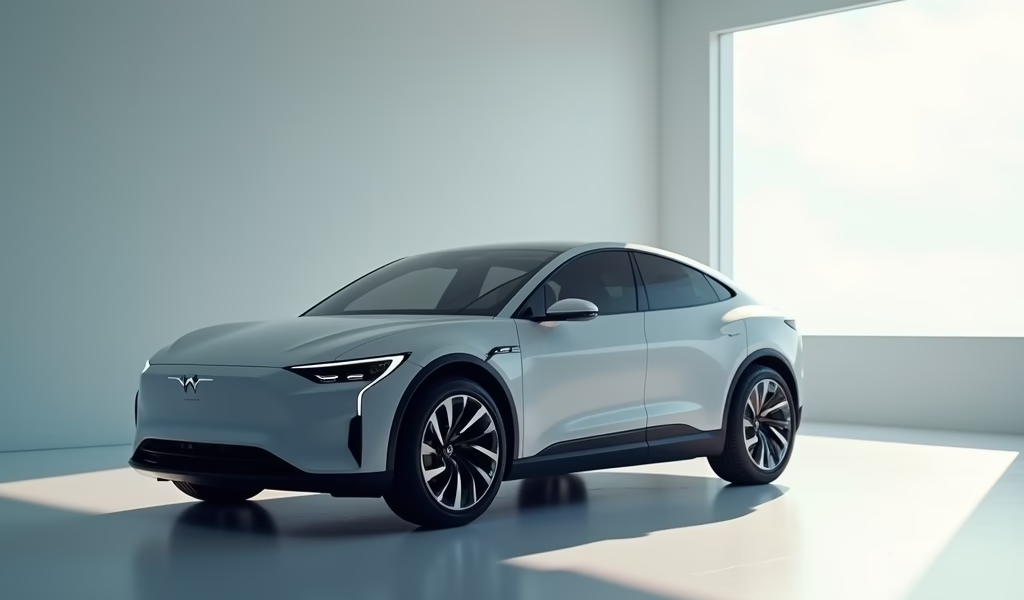Overview
This guide details essential maintenance for 2025 vehicles, highlighting specialized care for EVs and hybrids with focus on battery management, software updates, and seasonal considerations. Modern cars require both traditional maintenance (fluid checks, tire care) and tech-smart approaches, with many tasks still DIY-friendly while others demand professional service to maximize vehicle lifespan.
Table of Contents
- Introduction
- What’s New in 2025 Models
- Essential Maintenance for Modern Vehicles
- Brand-Specific Maintenance Tips
- DIY vs. Professional Service
- Extending Vehicle Lifespan
- Seasonal Maintenance Guide
- Tech-Smart Maintenance
- Conclusion
- Frequently Asked Questions
Introduction
As we roll into 2025, the automotive world is buzzing with innovations that would’ve seemed like science fiction just a few years ago. Having spent 25+ years under the hood, I’ve watched cars transform from simple mechanical beasts to sophisticated computers on wheels.
The best cars 2025 has to offer aren’t just about fancy touchscreens and zero-emissions promises – they’re engineering marvels that demand a new approach to maintenance. That’s what we’re diving into today.
Whether you’re eyeing that new hydrogen-powered Honda or the latest Tesla with mind-boggling range, proper maintenance will determine whether your investment lasts 5 years or 15. Let’s get your hands a little dirty (metaphorically speaking, since many 2025 models barely need you to pop the hood) and explore how to keep these technological marvels running smoothly.
What’s New in 2025 Models
The best cars 2025 lineup brings game-changing tech that’s reshaping maintenance needs. Electric vehicles now dominate, with even pickup trucks boasting 500+ mile ranges and charging times under 15 minutes. Traditional automakers haven’t surrendered though – hybrid systems have evolved dramatically.
Self-diagnostic systems have become incredibly sophisticated. Your car now essentially performs continuous health checks, often addressing minor issues without you even knowing. According to Car and Driver’s future tech analysis, the average 2025 model contains over 100 million lines of code – more than a space shuttle.
Material science has made leaps too. Carbon fiber composites and aluminum alloys are now standard in mid-range vehicles, not just luxury models. These lightweight materials improve efficiency but require different care approaches when damaged.
The digital integration is perhaps most impressive. Your vehicle doesn’t just connect to your smartphone – it learns from your habits, anticipates maintenance needs, and even schedules service appointments when it detects potential issues.

Essential Maintenance for Modern Vehicles
Even the most advanced cars need regular TLC. Here’s what to prioritize with the best cars 2025 has introduced:
Battery Management
For EVs and hybrids, battery health is everything. Unlike your smartphone, these sophisticated battery systems require strategic charging habits. Aim to keep your charge between 20-80% for daily use, reserving full charges for long trips.
Most 2025 models include thermal management systems that require occasional inspection. These keep batteries at optimal temperature, directly impacting longevity and performance. Have these systems checked annually, even if no warning lights appear.
Software Updates
Remember when cars just needed oil changes? Now they need updates like your laptop. Most 2025 vehicles receive over-the-air updates, but don’t assume they’re all automatic.
Check your vehicle app monthly for pending updates. These aren’t just for the infotainment system – they often include crucial power management, safety features, and even brake calibration improvements. Skipping updates can leave performance on the table or, worse, create security vulnerabilities.
Fluid Checks
Traditional fluids still matter, even in the most futuristic vehicles. Brake fluid absorbs moisture over time, reducing its effectiveness regardless of how little you use traditional brakes (regenerative braking handles most slowing in modern EVs).
For hybrids and traditional combustion engines, oil technology has advanced significantly. Most 2025 models use synthetic oils rated for 10,000-15,000 miles, but don’t stretch these intervals in extreme conditions.
Tire Care
With greater torque available instantly in electric motors, tire wear patterns have changed. Rotation schedules are more critical than ever, typically every 5,000-7,000 miles.
The specialized low-rolling-resistance tires on many efficient models require different inflation pressures. Under-inflation by just 5 PSI can reduce your range by up to 10% in some EVs, according to Consumer Reports tire testing.
- Check tire pressure monthly, not just when warning lights appear
- Inspect tread wear patterns quarterly for alignment issues
- Consider seasonal tires if you experience temperature extremes
- Don’t neglect tire rotation, even with all-wheel drive vehicles
Brand-Specific Maintenance Tips
Each manufacturer approaches their maintenance philosophy differently. Let’s break down what owners of the best cars 2025 offers should know by brand:
Tesla & Electric Specialists
Tesla’s minimalist maintenance continues with their 2025 lineup. They’ve eliminated even more scheduled maintenance items, but don’t mistake this for “no maintenance.” Annual brake fluid checks remain crucial, as does cabin air filter replacement every 2-3 years.
Rivian and Lucid have followed Tesla’s lead but add recommended annual cooling system inspections. Their sophisticated heat pumps and thermal management systems benefit from professional eyes checking for optimal performance.
Traditional American Brands
Ford and GM have embraced electrification while maintaining serviceability. Their hybrid systems now include self-diagnostic capability that can detect component degradation before failure. Pay attention to these early warnings – they’re designed to save you money.
Chrysler vehicles benefit from more standardized maintenance across their lineup. Their new autos for sale in 2025 feature unified service intervals regardless of powertrain, simplifying ownership.
Japanese Manufacturers
Toyota and Honda maintain their reputation for reliability through meticulous maintenance schedules. Their hybrid systems have proven remarkably durable, often exceeding 200,000 miles without major service when properly maintained.
The key with Japanese brands is following their specific fluid recommendations. Their transmissions and cooling systems often require manufacturer-specific formulations that generic substitutes can’t match.
European Luxury Brands
Mercedes, BMW, and Audi have sophisticated service monitoring systems that consider not just mileage but driving conditions. Their 2025 models track dozens of variables to determine precisely when maintenance is needed.
The premium you pay for European luxury maintenance is often offset by their longer service intervals. Just don’t ignore their maintenance reminders – these systems are calibrated specifically to maximize component life.
DIY vs. Professional Service
The days of handling all maintenance in your driveway are fading, but don’t hang up your wrenches just yet. The best cars 2025 offers still have DIY-friendly aspects:
What You Can DIY
Even with advanced vehicles, you can handle several important maintenance tasks:
- Tire pressure checks and adjustments
- Wiper blade replacements
- Cabin air filter changes (most models)
- Basic diagnostic checks using smartphone apps
- Exterior protection (waxing, ceramic coating maintenance)
Many 2025 models include detailed maintenance tutorials in their companion apps. These step-by-step guides often include augmented reality features that overlay instructions directly onto your view of the component.
When to Call the Pros
Some systems simply require specialized training and equipment:
- High-voltage system service (anything involving orange cables)
- Advanced driver assistance system calibration
- Cooling system service for EVs and hybrids
- Transmission service on dual-clutch and CVT systems
The good news? Professional service intervals have stretched significantly. What once required quarterly visits may now need attention just once annually, making professional service more affordable over the vehicle’s lifetime.

Extending Vehicle Lifespan
The best cars 2025 offers are built to last, but thoughtful ownership dramatically extends their service life. Modern vehicles benefit tremendously from preventative care.
Battery preservation techniques make a massive difference for EVs and hybrids. Avoiding frequent fast-charging when unnecessary and parking in temperature-controlled environments when possible can add years to battery life.
For all vehicles, driving habits matter more than ever. Modern powertrains gather tremendous data about how you drive, and this affects adaptive systems. Gentle acceleration and braking for the first few thousand miles helps adaptive systems “learn” efficiency-oriented patterns.
Surprisingly, regular driving benefits modern vehicles more than leaving them sitting. Extended periods of inactivity can actually harm battery systems and allow seals to dry out. Even a weekly 20-minute drive keeps systems primed and functioning optimally.
Documentation has never been more important. The new cars for sale 2021 models introduced digital service records, and 2025 models take this further with blockchain-verified maintenance history that significantly impacts resale value.
Seasonal Maintenance Guide
The changing seasons demand different approaches to vehicle care, even with advanced 2025 models.
Winter Preparation
Cold weather presents unique challenges for modern vehicles:
- Pre-condition EV batteries while still plugged in before driving in extreme cold
- Ensure washer fluid is rated for your region’s lowest temperatures
- Check tire pressures more frequently (cold air reduces pressure)
- Test battery health before winter (even EVs have 12V systems that can fail)
Many 2025 models include “winter mode” settings that optimize battery thermal management and energy usage. Activating these features can improve cold-weather range by 10-15%.
Summer Care
Heat management becomes critical in summer months:
- Keep charging equipment cool during hot weather charging
- Check cooling system function before extreme heat arrives
- Consider ceramic window tinting to reduce interior temperatures
- Use pre-conditioning while plugged in to reduce battery-draining A/C use
The thermal management systems in modern vehicles work hard during extreme temperatures. Having these systems checked before seasonal extremes helps prevent performance limitations and component stress.
Tech-Smart Maintenance
Embracing the technology built into the best cars 2025 offers makes maintenance simpler than ever before.
Vehicle companion apps now provide unprecedented insight into your car’s health. Most 2025 models can perform detailed self-diagnostics on demand, providing reports that would have required specialized equipment just years ago.
Predictive maintenance has evolved from marketing hype to genuine reality. Using aggregated data from millions of vehicles, manufacturers can now accurately predict component failures before symptoms appear. When your app suggests a particular inspection, it’s worth taking seriously.
Service networks have evolved too. Many dealerships now offer “tech updates” alongside traditional service, ensuring both mechanical and digital systems remain current. These updates often include map data, voice recognition improvements, and security patches.
Don’t overlook third-party maintenance tools. OBD adapters that connect to your smartphone have become surprisingly sophisticated, offering professional-level insights at consumer-friendly prices. These can help you make more informed decisions about when professional service is truly needed.
Conclusion
The best cars 2025 offers represent an extraordinary leap forward in automotive technology, but they still benefit from thoughtful, consistent maintenance. The good news? Many traditional maintenance headaches have disappeared, replaced by longer service intervals and predictive systems that take the guesswork out of vehicle care.
By understanding the unique needs of modern vehicles – from battery preservation techniques to software update management – you can enjoy thousands of additional trouble-free miles. These aren’t just cars; they’re sophisticated technology platforms that reward owners who embrace both traditional and digital maintenance approaches.
Remember that even the most advanced self-diagnostic systems benefit from your attentiveness. Taking a few minutes each month to check basic items and review vehicle health reports can prevent costly repairs down the road.
Ultimately, the relationship between car and owner has evolved. Today’s vehicles are partners that communicate their needs clearly – all we need to do is listen and respond. Do that consistently, and your 2025 model will likely still be turning heads in 2035.
Frequently Asked Questions
How often should I update my 2025 vehicle’s software?
Check for updates monthly through your vehicle’s companion app. Critical updates are usually pushed automatically, but optional feature improvements may require manual approval.
Do electric vehicles in 2025 still need regular maintenance?
Yes, though significantly less than combustion engines. Focus on cooling system checks, brake fluid, cabin filters, and tire rotations approximately every 7,500 miles.
What’s the biggest maintenance mistake owners make with modern vehicles?
Ignoring battery management best practices, especially consistently charging to 100% for daily use. This accelerates battery degradation more than any other common habit.
Are extended warranties worth it for 2025 models?
They can be for luxury brands or vehicles with extensive electronic systems. Look specifically for warranties that cover software and electronic components, not just mechanical failures.
How can I maximize my EV’s battery lifespan?
Keep state-of-charge between 20-80% for daily use, avoid frequent DC fast charging, and park in temperature-controlled environments when possible. These habits can extend battery life by 20-30%.


Pingback: Automatic Cars for Beginners: 7 Top Tips - knowsyourcar.com